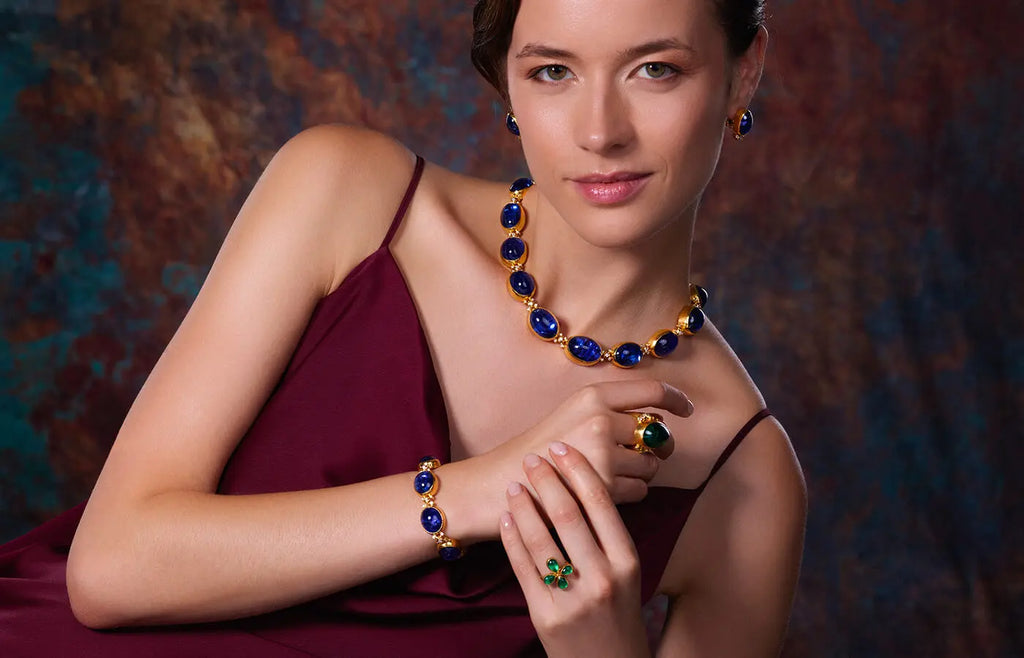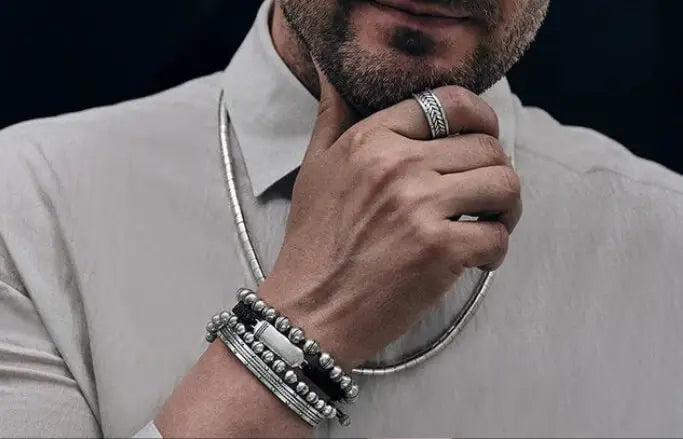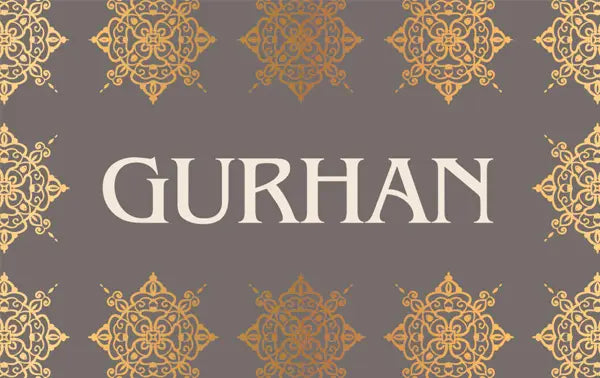Diamonds have been valued throughout history, that is for certain, but ever since Marilyn Monroe’s instant hit “Diamonds Are a Girl’s Best Friend” hit the shelves back in 1949 - the gemstone found itself in the spotlight, and for a good reason!
Diamonds have strong cosmic properties with countless communities favoring them for their unique beauty and hardiness. Diamonds have connections with purity, faithfulness, spiritual benefit, self-confidence, positivity and willpower.
Now, let’s dive deep into the specifics of this gemstone and why it is one of the most revered ones out there.

What is a Diamond?
A diamond is a gemstone made of carbon and is considered one of the hardest natural substances on Earth. With a Mohs scale rating of 10, diamonds are extremely difficult to scratch or chip, which makes them ideal for wear in rings and other jewelry. They are also very sparkly, which makes them visually appealing. Diamonds are very rare, which contributes to their value.
While diamonds are often associated with luxury and wealth, there are many other uses for diamonds in various industries because of their hardness.
What are the Most Important Things for Choosing a Diamond?
When you are in the market for the perfect diamond, you have to look out for what is known as “4 Cs”. They are color, clarity, cut, and carat weight - characteristics most important to consider when choosing a diamond. Each of these characteristics are important on their own but when inspected together, they yield the true value of a diamond. The most valuable diamonds are those that are large, rare, have greater carat weights and few blemishes or inclusions.
What is the Color of Diamond and What Kind of Grades Do They Have?
The color of a diamond is determined by the presence of trace elements in the stone, and it can range from colorless to yellow, brown, or even black. Diamonds are graded on a scale from D (no color) to Z (a yellowish or brownish color).
Even though colorless diamonds are the most popular ones, there are many varieties of diamonds when it comes to color variants. One could secure fancy-color diamonds, which come in a wide spectrum of colors. When it comes to understanding the value of such diamonds; colorless diamonds are the most valuable and sought after ones, followed closely by those with a slight yellow or brown tint with the rarest and most expensive diamonds being those with intense or vivid colors, such as blue, green, pink or red.
What Is the Clarity of Diamond and What Kind of Measures Do They Have?
The clarity of a diamond is the degree to which it is free from inclusions and blemishes. The GIA (Gemological Institute of America) Clarity Scale is the industry standard for measuring diamond clarity. It grades diamonds on a scale of 6 (included) to 10 (flawless). Most diamonds fall somewhere in the middle of the scale and if one is in the market for a valuable diamond, they would aim to acquire one with less inclusions and thus those ranking higher on the GIA scale.

What Are the Different Cuts of Diamonds?
Historically, diamonds were the most difficult stones for artisans to cut, mainly because of their hardness. Thanks to modern technology, diamond cuts today are much different to what they used to be. The French cut, for example, is one of the earliest types of diamond cuts and has a deeper culet than today’s ever popular brilliant cut. The brilliant cut is favored for it’s round shape and certain proportions to maximize a diamond’s sparkle. Another ancient cut is the rose cut, which is a type of cabochon cut with a flat bottom and facets along the top. Both brilliant and rose cuts are still the most popular cuts used in jewelry today. Technology has also brought us the ability to easily create diamond briolettes and slices using laser cutting and hole making machines. Gurhan uses all of these diamond cuts in his one-of-a-kind designs.
What is Carat? Why is it Important for Diamonds?
A carat is a unit of measurement used to weigh diamonds. One carat is equal to 200 milligrams, or 0.2 grams. The carat is an important factor in determining the value of a diamond. The larger the diamond, the more rare and valuable it is.
Fun fact: The term "carat" comes from the Greek word for "keration," which means "fruit of the carob tree." The carob tree produces seeds that are equal in weight. Since five of these seeds weigh one gram, they also used individual seeds for measurements equal to less than a gram. In ancient times, people would use these seeds as a unit of measurement for diamonds and other precious stones.
How to Care for Diamonds?
Diamonds are strong, that is true, but still they require a level of care and that also applies to how they should be cleaned.
Diamonds are best cleaned with warm water and mild soap. Be sure to rinse the diamond well to remove any soapy residue. A soft toothbrush can be used to remove dirt from the setting. Diamonds should be stored in a cool, dry place away from other jewelry to avoid having them scratch your other jewelry. It is also important to keep diamonds away from household chemicals, such as bleach. To keep your diamond jewelry looking its best you should have it professionally cleaned and the settings inspected by a jeweler at least once a year.

What is Moissanite? How Can You Tell It's Not a Natural Diamond?
Moissanite is a lab-created stone that shares many of the same physical and chemical properties as diamonds. However, moissanite is not a natural diamond, and there are several ways to tell the difference between the two. One way to tell moissanite from diamond is by its refractive index; moissanite has a higher refractive index than diamond, meaning that it disperses light differently. Moissanite also has a different hardness than diamond; while diamond is the hardest known natural material, moissanite is slightly less hard. Moissanite also typically has a lower specific gravity than diamond, meaning that it is lighter. The best way to tell if your diamond is moissanite is by using a simple tool that identifies the gemstone - either as diamond or moissanite. Gurhan does not use moissanite in any of his designs.
What is a Cubic Zirconia? How Can You Tell It's Not a Natural Diamond?
You have probably heard of cubic zirconia, but what is cubic zirconia made of? A cubic zirconia is an artificial stone that is used as a diamond simulant. It is made of zirconium oxide and is much cheaper than a natural diamond. You can tell it is not a natural diamond because it is not as hard (8.5 on the Mohs scale) and it has a different refractive index.
If you look at a cubic zirconia under a microscope, you will see that it has a cubic crystal structure, whereas diamonds have an octahedral crystal structure. The best way to tell the difference between cubic zirconias and diamonds is by using a simple tool that identifies the gemstones - either as diamond or cubic zirconia. Gurhan does not use cubic zirconia in any of his designs.
What is a Lab Grown Diamond? How Can You Tell It's Not a Natural Diamond?
A lab grown diamond is chemically and physically identical to a natural diamond, but it has a different origin. All lab grown diamonds come with an origin certificate from the lab where they were created. Natural diamonds do not have such a certificate. Another way to tell a lab grown diamond from a natural diamond is by its price being less expensive than natural diamonds of the same size and quality. Finally, you can tell a lab grown diamond from a natural diamond by looking at it under a microscope. Lab grown diamonds have a more regular, cubic shape than natural diamonds, which have a more irregular shape. However, these differences are not visible to the naked eye.
There are tools to identify lab grown diamonds. Only a trained gemologist can tell a lab grown diamond from a natural diamond by using special equipment. Gurhan does not use lab grown diamonds in any of his designs.

What is the Kimberley Process?
The Kimberley Process is a set of international agreements, created in 2003, that aim to stem the flow of conflict diamonds. The process requires diamond-producing countries to certify that their diamonds are conflict-free, and provides for the tracking of rough diamonds from the point of origin to the point of sale. The process is overseen by the Kimberley Process Certification Scheme (KPCS), which is chaired by the government of South Africa. As of 2022, the KPCS had 89 participating countries. Gurhan adheres to the Kimberley Process as it pertains to all of his diamonds and always deals with natural diamonds. Every diamond Gurhan uses is ethically sourced and that's the way we've always done it.
Gurhan’s Unique Use of Diamonds
Combining years of experience and knowledge, Gurhan’s diamond and gold jewelry is often made with a mix of different sizes, cuts and shapes to create an original look that is never ordinary. His use of brilliant cut, rose cut, briolette and sliced diamonds in his designs, either to accent an all-gold piece or, with another feature stone ensures an elegant, coherent and exciting design can be captured.
His diamond one-of-a-kinds are truly wearable works of art like the Elements Gold All Around Necklace, With Diamond and Pointelle Gold Single Drop Earrings, 22mm Round, Post Top, With Diamond Slices - demonstrating his clear understanding and connection to the gemstone.
Whether you are looking for jewelry that will be the most memorable gift for that special someone, or an elegant piece that caught your eye, Gurhan's collection of diamond jewelry delivers the quality you want with the attention to detail you deserve.
Click here to shop Gurhan’s diamond jewelry collection.





 GURHAN Elements Gold All Around Short Necklace, Mixed Amorphous Shapes, With Diamond
GURHAN Elements Gold All Around Short Necklace, Mixed Amorphous Shapes, With Diamond GURHAN Pointelle Gold Single Drop Earrings, 22mm Round, Post Top, With Diamond Slices
GURHAN Pointelle Gold Single Drop Earrings, 22mm Round, Post Top, With Diamond Slices GURHAN Pointelle Gold All Around Statement Bracelet, Round And Oval Bezeled Links, With Diamond Slices
GURHAN Pointelle Gold All Around Statement Bracelet, Round And Oval Bezeled Links, With Diamond Slices GURHAN Elements Gold Stone Cocktail Ring, 20mm Round Rosecut, With Diamond
GURHAN Elements Gold Stone Cocktail Ring, 20mm Round Rosecut, With Diamond
Comments
Anonymous said:
Interesting!
March 14, 2023